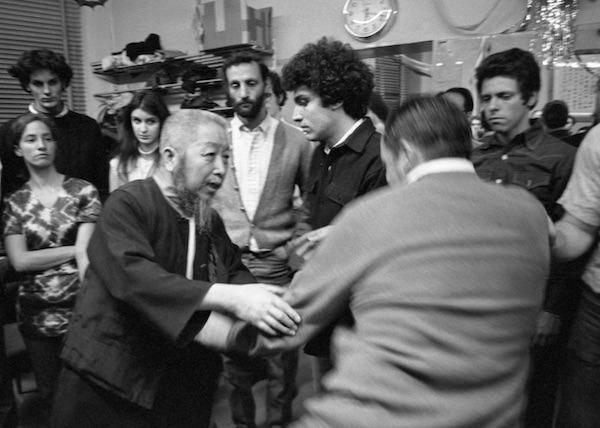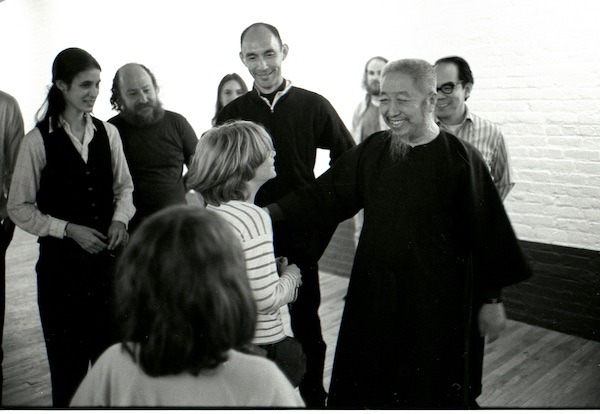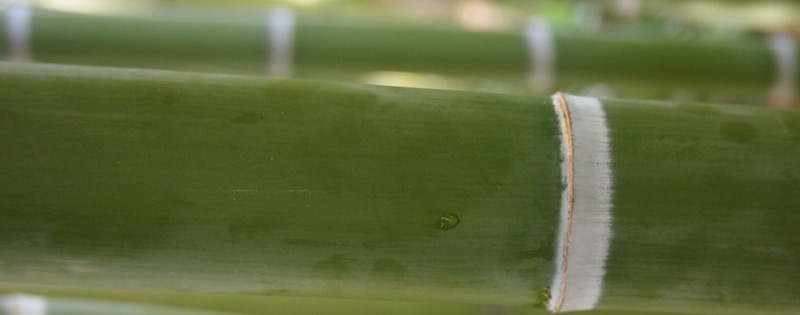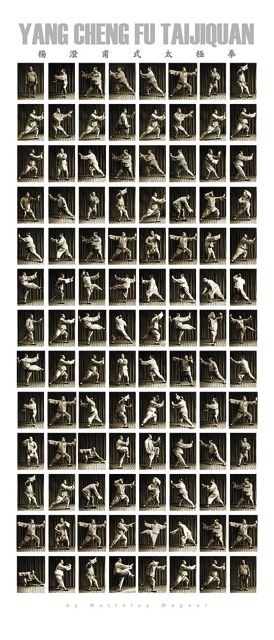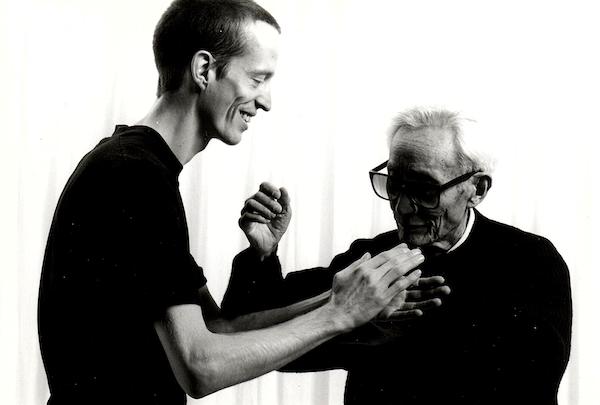Body mechanics sitting, bending, the changes of the Dantian and some martial aspects of Tai Chi
Body mechanics: Sitting and bending in the Tai Chi form
In part 3 of the interview, Master Chen answers some questions about the Tai Chi body mechanics. Asked about the way he found out about body mechanics, – through his teacher of by himself – he answers that at the root of it was closely watching his teacher Cheng Man Ching practicing Tai Chi. He thereby noticed the alternation of collapsing and forming the shapes of the form. Later, when teaching, Master Chen saw the need for explanations arise and developed a more systematic approach to explain different aspects of the body mechanics, e.g. the part the knees and hips play in bending.
Sitting
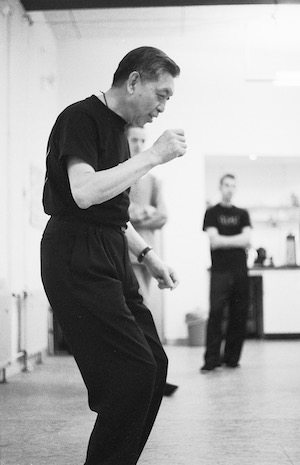
Master Chen also expands upon the “sitting”, the basic posture of Tai Chi, during the whole form and some ideas on how to get students to understand practically.
The transition from the mere sitting into movement is illustrated by a reference to a “traditional” Tai Chi class – “Ben Lo-type”, i.e. with a very orthodox master – where the students are expected to do the standing column for 20 minutes and more while the teacher seems to be gone. After some time, the students, still in their posture, begin looking out for their teacher, turning and moving, wondering where he went (and perhaps even more important: when he will be back). In this context, the excitement of not wanting to be seen as leaving the exercise while at the same time being on the look-out serves as a mental image of the necessary awareness of the student during the form.
To drive this analogy even further, Master Chen invents a question and answer game: “Where is the master?” (Question: preparation, indecisive turn) – “Oh, he is coming!” (Answer: action, turning back forwards, taking up the intended shape). Another example for the changes in the form is that of a security guy looking at surveillance screens: Nobody there, no movement, still nobody there: he looks away (uninterested). – Suddenly: movement again at the corner of the eye! – The guy immediately turns back back to front view (alert).
To find more examples form real life for teaching purposes, Master Chen recommends to watch daily scenes like people sitting down carefully, anxious that their chair might be pulled away in the last second, the act of somebody picking something up, somebody falling asleep in the movie theatre (according to Master Chen one can see the hip of the drowsy person collapsing into the back of the seat first, before the head also drops).
Progress
What if you feel your students are not ready to master the Tai Chi body mechanics? Master Chen holds that the time for teaching body mechanics is right away from the beginning. It may be so that the students do not get some aspects immediately, but the most important thing is to not hold something back, to offer them at least the opportunity to learn.
Dantian changes
Asked about the Dantian changes in the form, Master Chen explains and demonstrates that during exhaling and inhaling there is not much change. The Dantian is there, but it does not go out or in. The part of the Dantian that is working are the inner thigh muscles and the muscles of the qua area (Chinese term roughly translating to the crotch area, also encompassing the muscles of the lower back and the inner thigh, coming close to “the core” known in Western gym training). According to Master Chen, beginners tend to stress the Dantian area in an effort to move from there, trying to blow up or activate the Dantian area and thinking about each movement starting from there. This overdoing is not unknown to Master Chen himself (“in the beginning, my face turned red” due to the effort), but later the working of the back and leg muscles while bending and extending will become natural. When the body mechanics are mastered “the dantian is always there and never changes “during the form.
Martial aspects of Tai Chi: looseness, tension and speed

Asked about Tai Chi training for martial arts, Master Chen underlines the necessity to change between tense and loose to reach maximum speed. Any physical activity like carrying the luggage on his trips and carrying his young kids thus formed part of the training: daily, “casual” activity, taking care of everyday tasks naturally involving the whole body leads to loosening of the muscles over time.
“One usually knows how to tense up”, Master Chen observes. But being very muscular while having lots of tension does not do the trick, as it is not the way you can get power from speed. – So what is the secret to creating effective tension, i.e. a big change from loose to tense? – Push hands training that accentuates the relaxing part, getting used to body contact and staying relaxed in confrontation. This looseness makes one able to tense up effectively when needed (e.g. for a punch, a kick or a block).
So, why not favor looseness above the other aspects and put it first? Master Chen hints that Cheng Man Ching’s theory that one not should not be lifting weights simply because one is doing Tai Chi may not be the whole story. The advocates of “pure suppleness” and “relaxation only” approaches to Push Hands and Tai Chi as a martial art miss that not using our body as a physical body, but treating it as a mere vehicle of an abstract philosophy leads to a reduction of muscle mass due to bodily inactivity. And this, in time, also reduces one’s capacity to tense up – leaving the practitioner with little potential for the changes that create speed and action.
Master Chen holds that hardness and softness approaches in martial arts can theoretically be combined for a better result: “If (Western) boxing or karate people – people training hardness as first way – would at the same time be able to relax like me, they would be faster than me.” – Consequently, in his own training Master Chen used additional punching bag training for tournament preparation – aiming to further condition the muscles for the impact while retaining their looseness at the same time.
Video Body mechanics sitting
Author: Gabi Kannenberg
Images: Nils Klug and Taiji Forum
German version of this series

